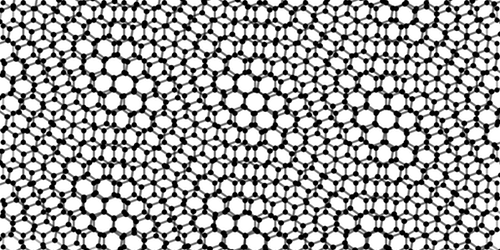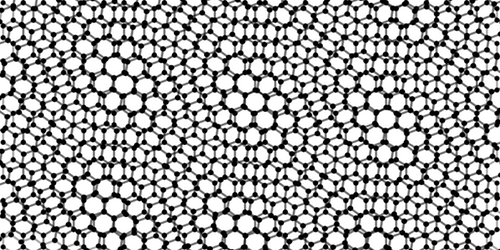Stretching Graphene Localizes its Electrons
By stacking one-atom-thick sheets, researchers can construct ultrathin materials with tailored electrical and optical properties. These properties can depend on how the sheets are arranged. A pair of graphene sheets stacked slightly askew, for example, can superconduct (see 14 March 2018 Meetings). However, no one has yet looked at what happens when one sheet is stretched relative to the other. Now, Vincent Renard of Grenoble Alps University, France, and colleagues have done exactly that. They found that graphene bilayers made of sheets under slightly different tensions had dramatically altered electrical properties.
Renard and colleagues created their bilayers by growing one graphene sheet on top of another. This process naturally introduced different amounts of tension and rotation in the two sheets. As a result, at periodic positions across the bilayer, the sheets aligned, with their honeycomb atom patterns perfectly overlapping. In between, the sheets’ patterns were shifted by half a honeycomb cell. The team used a scanning tunneling microscope (STM) to analyze how electrons behaved in the aligned and unaligned areas.
Measuring a region where the honeycombs aligned, the team observed large spikes in the numbers of available electronic states as they reduced the voltage between the STM tip and the bilayer to zero. These spikes were smaller for measurements on unaligned regions. Regions with high numbers of electronic states have pockets of trapped electrons, which can lead to superconductive or magnetic behaviors in the bilayer.
Tuning graphene’s electrical properties by stretching and rotating the sheets does not yet offer specific advantages over other approaches, but the team says that their method provides researchers with a new route to achieving this goal.
This research is published in Physical Review Letters.
–Christopher Crockett
Christopher Crockett is a freelance writer based in Montgomery, Alabama.





